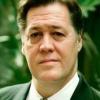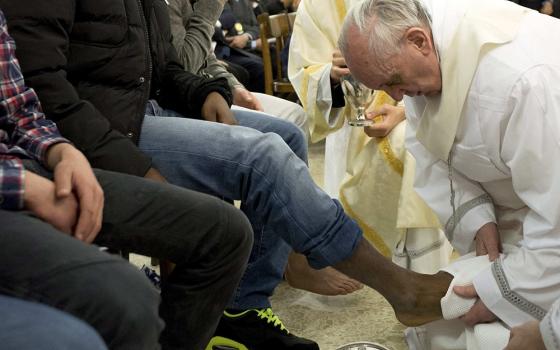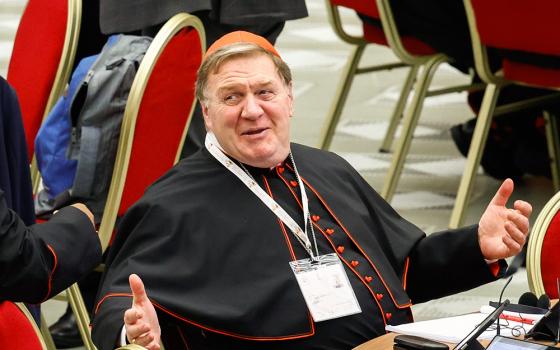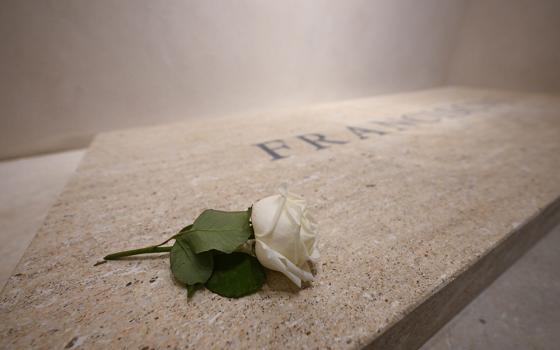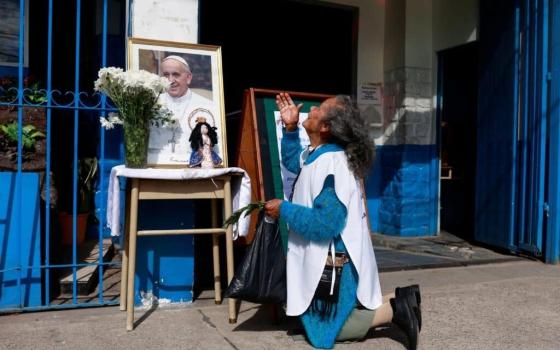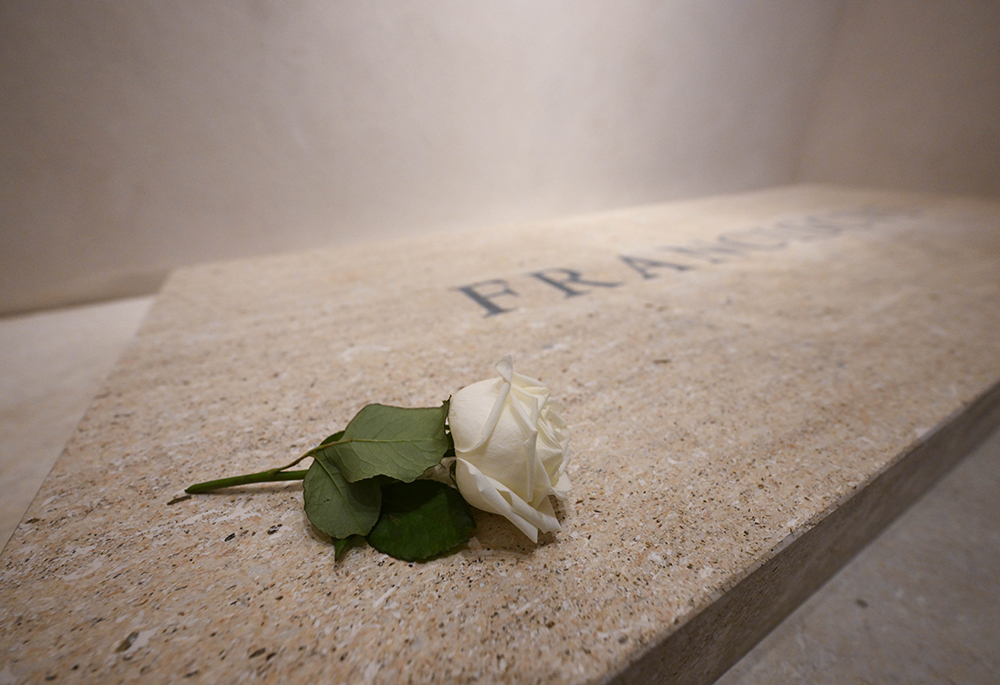
A single white rose sits on the tomb of Pope Francis in Rome's Basilica of St. Mary Major early on April 27, 2025. (CNS/Vatican Media)
A Los Angeles cardinal, Roger Mahony, 89, dripping tracks of scandal from recycling predator priests, found a shot of redemption at Pope Francis' funeral.
Mahony is a cashiered cardinal. His successor, Archbishop José Gomez, restricted Mahony's public role after the abuse scandals that cost the archdiocese some $660 million in 2007 legal settlements. Gomez recently approved $880 million to 1,353 survivors who filed later grievances. Mahony's tarred history can be mined at BishopAccountability.org, the online archive that since 2003 has gathered documents on a criminal sexual underground in clerical culture.
Aged out as a conclave voter, Mahony, thanks to Cardinal Kevin Farrell, the chamberlain in charge of the rituals, was granted proximity to Francis' coffin — because of seniority, a Vatican spokesman announced. Thus a cameo of the ecclesial court whitewashing a prince's record of facilitating sexual violations against young people. Mahony, fluent in Spanish, told Los Angeles' ABC 7 that he had exchanged at least 30 letters with Francis over his papacy.
The letters suggest a strand of Francis' complex personality: a self-confessed sinner in many interviews, conferring solace if not forgiveness on the fallen Mahony. Yet after Francis' struggle, and well-known failures with the crisis of predatory priests, did he imagine that letters to Mahony might nudge Farrell to admit him into such a sacred moment, as survivors like the chorus in a Greek tragedy cried foul?
In this April 13, 2005, photo, five cardinals, including Los Angeles Cardinal Roger Mahony, second from left, attend a memorial Mass for Pope John Paul II at St. Peter's Basilica. (CNS/Nancy Wiechec)
However Mahony managed his cameo, it echoes what Francis said in a 2013 interview with La Repubblica: "Heads of the Church have often been narcissists, flattered and thrilled by their courtiers. The court is the leprosy of the papacy. ... When I meet a clericalist, I suddenly became anti-clerical."
As Francis the spiritual populist, who championed migrants and marginalized people, was buried in the basilica of Santa Maria Maggiore, what kind of power structure prevails? Will the hubris of a culture the late pope so reviled somehow find a successor to broaden Francis' agenda of radical mercy? Or will the next pope take it back to monarchical splendor, with the poor an inconvenient truth?
An even more alienated cardinal wormed his way into the burial rites, as Elise Ann Allen reported in Crux. The Peruvian cardinal, Jean Luis Cipriani Throne, 81, retired Lima archbishop, who "for decades was a towering rightwing personality in the Church in Latin America," attended the vespers for Francis. "He was also seen leaving the hall where general congregations are taking place, dressed in his cardinal attire despite having been banned from doing so."
In January, El Pais, the Spanish daily, reported that Cipriani had been sanctioned by Pope Francis in 2019, after accusations that he abused an adolescent boy, and had been restricted from "participation in a conclave and on donning clerical attire," Allen wrote.
Flawed though democracy may be in practice, no other system provides checks and balances with a justice system to impartially police high officialdom. (President Donald Trump is trying to destroy this system with an agenda of nihilism.) The strength of impartial justice is the missing element in Francis' Vos Estis Lux Mundi document, reforming canon law to remove predators and safeguard children. With the hierarchy left to engage in fraternal correction, out pop specimens like Mahony and Cipriani.
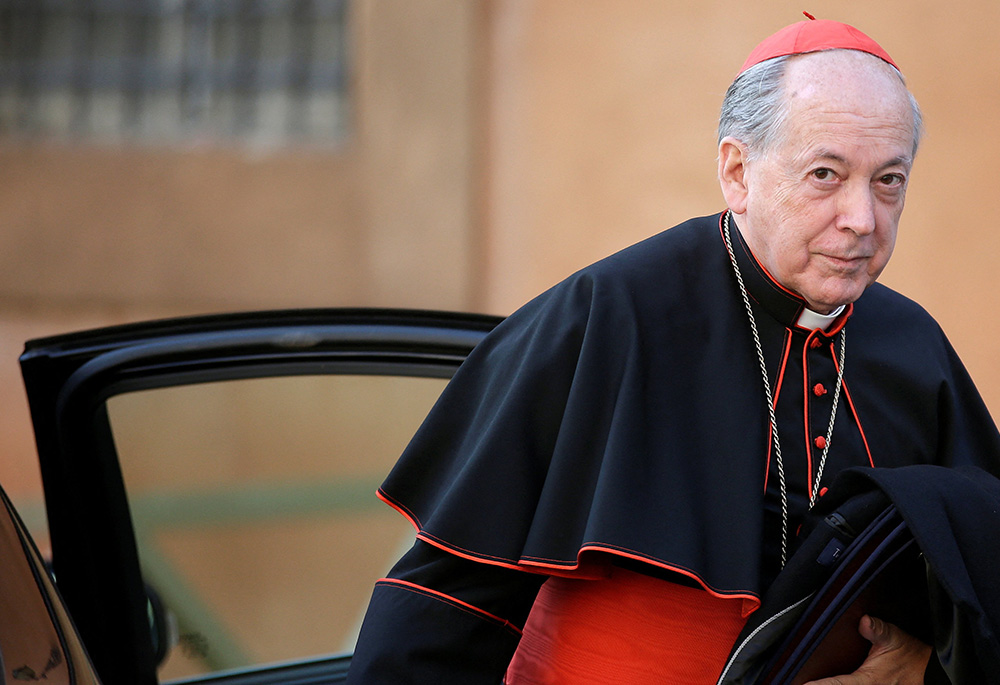
Peruvian Cardinal Juan Luis Cipriani Thorne arrives for a meeting at the Synod Hall in the Vatican on March 4, 2013. (OSV News/Reuters/Max Rossi)
As the deities of high television fixate on pomp and ritual, we should heed the words of the late cardinal and long-serving secretary of state, Angelo Sodano: "The Curia is a brotherhood," he once told the New York Times. Sodano famously enabled such notorious predators as Fr. Marcial Maciel Degollado, founder of the Legionaries of Christ, and the late Austrian cardinal Hans Hermann Groër, both of whom John Paul II sheltered despite widespread public charges in the press. The hubris that honeycombs the ecclesial brotherhood, a power structure of men without women, drives the aching history of the abuse crisis.
The most striking dimension of this unseemly saga, stretching across four decades as an on-again, off-again media narrative, is that press coverage, anchored in legal proceedings, became a force that slowly forced the last three popes to respond.
The canon law investigations by the notable reformer, Malta Archbishop Charles Scicluna, followed the path of press coverage and well-publicized legal proceedings in various countries.
The hubris that honeycombs the ecclesial brotherhood, a power structure of men without women, drives the aching history of the abuse crisis.
John Paul II on this crisis was an abject failure, a study in epic denial. Benedict XVI achieved some reforms, consolidating canonical power at the Dicastery for Doctrine of the Faith, ousting Maciel and authorizing reparations to victims — something akin to civil lawsuits provided by Western courts anchored in British common law.
But as the rising abuse cases in Europe and America in 2010 exposed Ratzinger's negligence as a cardinal and archbishop in Munich, the pope reeled from the Vatileaks scandal and in 2013 resigned.
Given the monarchical canon law system, Francis sacked more complicit and abusive hierarchs than John Paul II and Benedict XVI. That speaks to his moral outrage at the "leprosy" of the court and a core sense of justice. Will the next pope use those powers against members of the brotherhood?
Francis's negligent handling of predators as archbishop of Buenos Aires, well-detailed in Philip Shenon's new book, Jesus Wept, along with his myopic response to certain ecclesiastical crimes as pope, include initial foot-dragging on the mounting allegations against the Jesuit religious artist, Marko Rupnik.
Nicole Winfield of the Associated Press reported: "The Jesuits expelled Rupnik from their order in 2023 after more than two dozen women came forward to say he had sexually, spiritually or psychologically abused them over 30 years, some while they were collaborating with him on artworks. He remains a priest and his supporters have denied he did anything wrong."
Advertisement
After such tawdry spectacles, Francis's choice of St. Mary Major for his final rest bears poignant symbolism. At this basilica on Christmas Day, 1538, the Spanish founder of the Jesuits, Ignatius Loyola, celebrated his first Mass. Not quite five centuries later, in 2003, Pope John Paul II, urged on by Cardinal Sodano, provided a pastorship at $12,000-a-month for the late Cardinal Bernard Law, whose long record of recycling clergy pedophiles in Boston sparked his resignation after The Boston Globe's Spotlight series. Law found fraternity in the Roman Curia, and was welcomed on the embassy social circuit, almost never granting an interview before his 2017 death.
Francis' tomb assures a pageantry of pilgrims to his memory as the scandal-battered church seeks high ground on the worst crisis since the Reformation.


